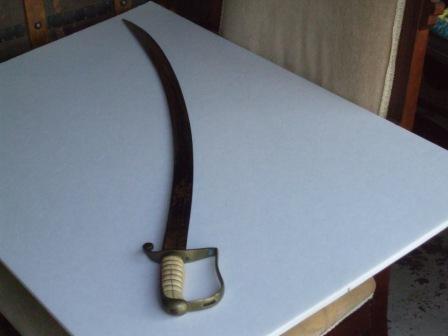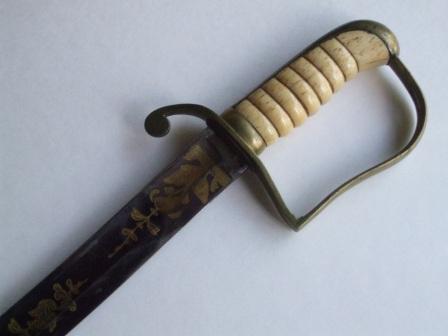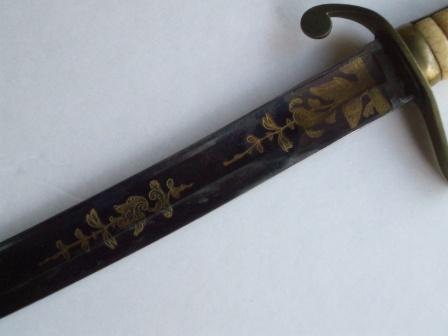Posts: 1,978 Location: Nipmuc USA
Mon 03 Sep, 2012 4:57 pm
Hi Don
The blade decoration looks like British work. Swords of this type were made into the 1830s, so a definitive timeline may be difficult without distinctive markings. Is there any Americana displayed in the blade decoration (ie the great seal eagle&
shield routine, quiver with arrows, etc)? The form goes back to the late 18th century. While many might say absolutley American market, due to the lack of langets on the guard, that is not always true. It may also be a continental cutler's work but one would expect langets from them in most circumstances. Bone vs ivory was more common in later decades but used earlier as well. Most would list it as a mounted artillery militia officer's sword, or in the case of the British, yeoman cavalry officer. With what I can see, 1820s to the 1830s would be my estimate.
Look closely at the spine of the blade for markings (letters or a scrolled s looking thing) Look closely also at the base of the blade on the flats for any letters, numbers etc. any markings on the scabbard as well might be a clue. My brace of sabre and spadroon shre similar traits but only one of them clearly identified. The spadroon has a similar grip and guard to the one you show, while the other known to be Berger from the Alsace area (also known as marked to the family's work in Paris) Sorry for the fuzzy dealer photos of the spadroon.
[ Linked Image ]
[ Linked Image ]
With a brass scabbard, this is a great package and I'd love to see some more coplete and brighter pictures. Light overcast outdoors is ideal and will show a lot of detail lost in dark photos.
The thing about the blade work is that generic decoration was used for a generic market. Blades with this type of blue&gilt were used in cutlery (many surplus blades from England got used upp in the American market) mostly before white etching became more prevalent by the 1830s to 1840s. There were too many retailers of these importers to licst but some were marked by them. What I am getting at is that the blade itself may have been "in stock" decades before it was actually put together and sold abroad. I have a circa 1800 eagle pommel that has a simple foliate decoration with no display of arms or Americana.
Cheers
GC





